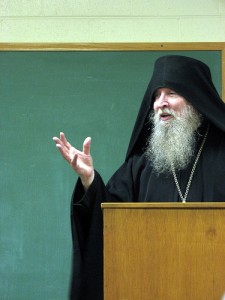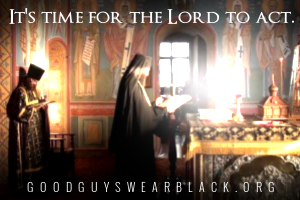by Archbishop Lazar Puhalo
His Eminence, the Most Reverend Lazar (Puhalo) of Ottawa, is a retired hierarch of the Orthodox Church in America, and is the founding abbot of the Monastery of All Saints of North America, Canada. He is known for his prolific theological writings, particularly regarding his criticism of the aerial toll house teaching of the Bogomil heresy that has crept into some Orthodox circles. This is taken from his blog Orthodoxy in the 21st Century.

When Hebb released his seminal paper on neuroplasticity in 1947-1948, he radically changed the way learning was perceived. Perhaps we should rather say that he set in motion a whole series of developments that produced new and deeper understandings about the whole function of the brain, shed light on the mind and provided a profound insight into revelation and the meaning of ritual and symbolism. Orthodox Christians may find it interesting to note that the fathers and mothers of early monasticism had already perceived the principles of neuro-plasticity without having any of the physiological or scientific information about the brain. What they understood was the profound link between the spiritual, emotional and physical aspects of mankind.
God and His works are not to be understood by fallen human concepts and rationalism. God spoke to Israel offering iconic types and imagery that led the holy nation to a spiritual understanding of the awesome mysteries and did not permit them to identify their expectation with earthly and limited expressions. In the same way, our holy fathers offered an apophatic theology carefully setting signs, types and symbols to establish a boundary for us on the true path, but never delimiting the mystery in a frame of words that would diminish the Will of God and His revelation to the likeness of a legal document. No theology is according to the Orthodox Faith if it is not based on those valid types and symbols which we have received in our Sacred Tradition. In the Holy Seventh Ecumenical Council, the holy fathers clearly dogmatised that valid icons are the equivalent of true theology.
Valid icons consist in types and symbols, not in interpretations of reality by the fallen human mind. All elements of a canonical icon are symbolic and contain a profound revelation; there are no naturalistic elements in this Liturgical art.
No theology can be valid and sound unless it is based first of all on the icon that God offers in the first pages of the book of Genesis: God created man according to His likeness, one nature revealed in many persons, as the one divine nature is revealed in three distinct hypostases. He created man to live in the likeness of His own life. That life is revealed to us in types and symbols, for God, and from Him the Holy Church, clearly have understood that mankind’s mind and its brain, his knowledge and his language are all symbolic, that language develops on the matrix of vision, and that even what we see enters the brain and is processed in symbolic images. It is interpreted by the mind in the brain symbolically and the concepts attached to this symbolic unfolding constitute the meaning that one gives to all things.
The Orthodox Christian liturgical services and the symbolism that they contain are also expressions of such a deep understanding. While rationalists have not been able to grasp the significance of this, it is an example of the profound depth of the revelation contained in Orthodox worship.
This being the case, it is especially disturbing to see so many of our teachers and priests advocating an abandonment of the types and symbols that have been given to us through the holy fathers, and especially by the liturgists, of the Orthodox Church. In particular, there are writers in our era who complain about the symbolism given to actions in the Divine Services and to various elements of the furnishings in the altar. They decry the symbolism attached to the chalice covers, the aer, the rapidé and other items used in the liturgy. Some wish to abolish the iconostas altogether, or at least the Royal Gates. In attempting to abolish the symbolic elements of worship, they would lead us on the path to Anglican/Episcopalian meaninglessness. Let us recall that it was just such “liturgical reform” that left the Anglican Church even more empty of significance and meaning than it had been at the beginning of the 20th century.
Let us recall also that the Anglican Church of Canada now permanently closes on average of one parish church a week. We will give some concrete examples of the heretical notions and falsehoods that develop within the Church when the wisdom and understanding of the great liturgists, including St. Symeon of Thessaloniki, are disregarded, or even unknown to priest, hierarchs and teachers in the Church.
